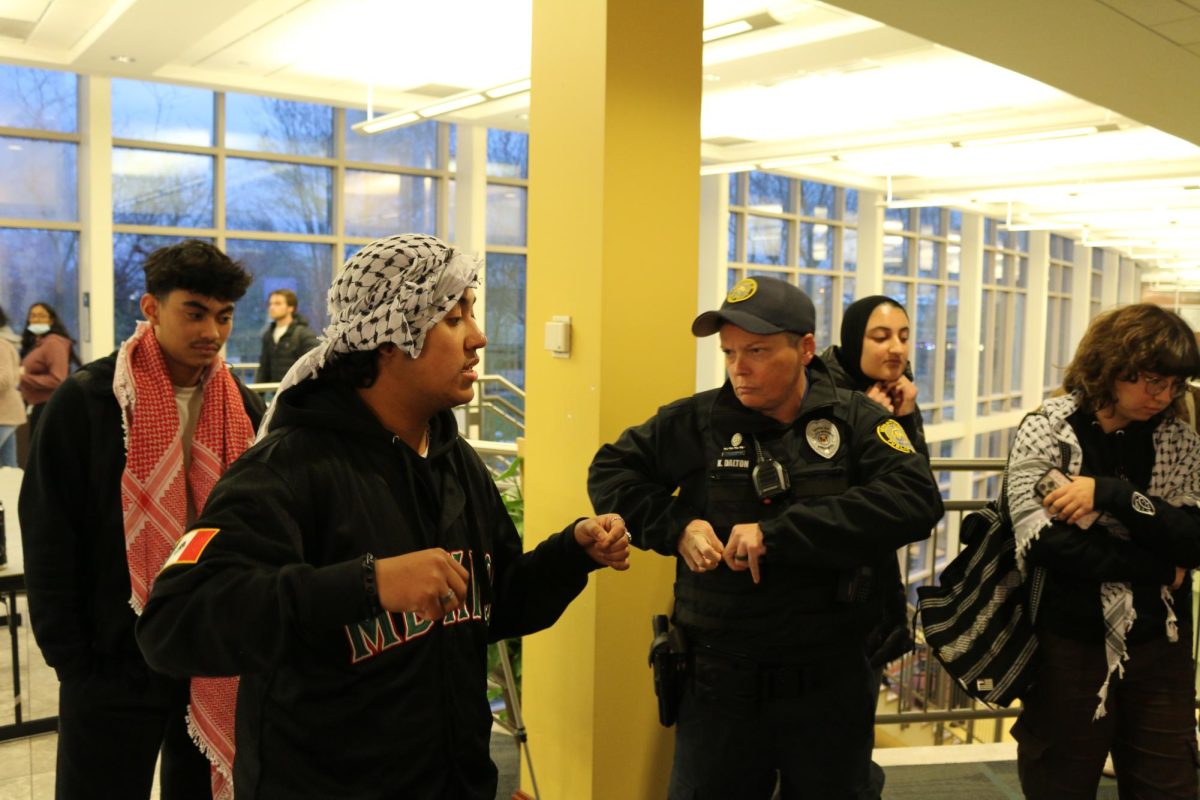Organizers ask if administration’s gesture is enough
A little less than a year ago, in February of 2015, Hillary Birdsong and two of her adjunct colleagues were sitting in a café discussing what they could do about their working conditions as part-time faculty at Saint Louis University. In the year that followed, a back and forth between the adjuncts and administration brought differing statistics and blurry definitions of what exactly qualified as adjunct faculty. However, in late November 2015, a change was made that both sides can consider a step toward progress.
While adjunct professors were informed of an increase in some of their compensations, Provost Nancy Brickhouse publicly announced these changes via email to the SLU community. These bumps in pay were given to adjuncts in both the College of Arts and Sciences and the College of Professional Studies, specifically to those who have worked at the university consistently for three or more years. The increases were given as followed: a six percent or $200 increase to adjuncts with three-to-four years of service per three credit-hour course; a 13 percent or $400 increase to those with five-to-six years; and finally, a 23 percent or $700 increase to those with seven or more years at the university.
“In addition, we will provide funds to support annual adjustments to adjunct compensation within each School or College consistent with the annual merit pool. And every three years the Deans and I will review adjunct compensation rates overall,” said Brickhouse in her email to students on the morning of Jan. 19.
According to Michael Lewis, the Associate Vice President for Faculty Development, it had been a lengthy process to come to this decision. The question that led the administration to the move they made on the issue was: “When was the last time we gave any type of increase in adjunct compensation?”
“Nobody could figure out when that was. It’s obviously been a long time,” said Lewis. “So the people who have been with us the longest and who have stayed with us and have gone all this time without an increase in compensation, we decided to reward those people the most.”
For Birdsong, an adjunct professor in the Languages, Literatures and Cultures department who has been very vocal throughout the current organizing process, her reaction to the newly announced increased compensation was one of mixed emotions.
On one hand, Birdsong said, “It’s kind of crazy because really when I saw that email about increasing adjunct compensation, I thought, ‘wow, this would have never happened if we hadn’t been organizing.’” But on the other hand, Birdsong, like other adjunct faculty, thought that while this was a step in the right direction, it was not quite big enough.
“Everyone was kind of like, ‘huh.’ I guess we were kind of poking the bear a little bit,” said Birdsong. “It’s not much … I mean it’s still not enough to have a family. It was a nice gesture for sure.”
Prior to this increase in pay, adjuncts who taught in the College of Arts and Sciences and the College of Professional Studies received $3,000 per course. Birdsong is teaching three courses this semester and will be receiving a combined wage of $9,600 — a wage that she cannot depend on solely, so she will have to continue working two other jobs.
“[In regard to] the specific compensation that’s been offered … to put it in perspective I think it’s insulting to think that two hundred dollars extra or even seven hundred dollars extra a semester per course constitutes any kind of meaningful change,” said Sheri Anderson-Gutierrez, an Assistant Professor at SLU. While Anderson-Gutierrez is not an adjunct, she has been a consistently vocal figure of the adjunct movement.
She continued, saying: “Two hundred dollars over 4-5 semesters comes out to about fifty extra bucks a month and that’s not really… that’s how much gas costs to get here. It’s not significant change… in helping adjuncts create any kind of stability in their lives or in their work situation.”
Like Birdsong, Anderson-Gutierrez acknowledges the progress that her group has achieved in the past year, saying: “Obviously we are making some kind of impact because the administration is responding. I’m proud for the adjuncts because we are finding a voice.”
In response to the adjunct’s reaction that perhaps this amount of money is not enough, Lewis explained that while he would like to do more, there is not much more to offer due to the financial issues that the university is experiencing.
“I don’t think anyone thought that we were going to make everyone happy, we had to see what the university could afford. Certainly, everybody was operating in good faith and we did what we could do,” said Lewis.
Anderson-Gutierrez admitted that she believes that administrators like Lewis do want to do more, but like other explanations that the university has given for their actions on these issues, she doesn’t think Lewis’ holds up.
“We keep hearing about the budget crisis … Fine that’s good … We can appreciate and understand that,” said Anderson-Gutierrez, “It’s a matter of priorities … we understand there might not be an immediate change, but there needs to be a long term plan.”
This back-and-forth has been a defining characteristic of the adjunct movement in the past year. The adjuncts and administration disagreed on two main points: the statistics and a clear definition of the term “adjunct.”
In a presentation to SGA in October 2015, the provost’s office claimed that the statistics the adjunct’s had been presenting during their events were incorrect. While the adjuncts said that the percentage of professors teaching at SLU as adjuncts totaled 41 percent, the administration said that there had been 627 adjuncts at that time out of 2187 total faculty, which constituted 29 percent of the professors at SLU.
Birdsong and Anderson-Gutierrez were able to present later in November in order to explain their statistics and how they came up with that number.
“We presented to SGA that that number is in flux constantly. Just because of adjuncts contracts not being renewed… some semesters might be higher numbers and some semesters might be lower,” said Birdsong.
Anderson-Gutierrez also attributed the discrepancy to their use of more of a national average rather than a number that was specific to SLU. Additionally, a factor that has contributed to adjunct and administration’s mutual confusion has been the exact definition of what an adjunct is.
“They admitted a very convoluted process in even how employees in this institution are categorized and cataloged,” said Anderson-Gutierrez. Apparently, there are five to six categories of professors who qualify as adjuncts, but not all of them are dependent on their professorship for their main source of income.
An example given by Anderson-Gutierrez was that there are lawyers who teach a course and are compensated by the administration, but also want to use these hours teaching as the community service they are required to do for their occupation, so they donate the money instead.
“We’re not talking about these people … we’re talking about people who are trying to make a living, pay rent, have a car and families and live a life based on the income that they receive from teaching classes,” she said of the different kinds of adjuncts at SLU.
Despite their differing statistics, and differing definitions, Anderson-Gutierrez said that it did really matter how many adjuncts work at SLU; they should be compensated with a living wage, regardless.
“We’re talking about real people who are living in marginalized conditions and that are not receiving living wages for work that they do,” said Anderson-Gutierrez. “We’re talking about highly educated people with masters and PhDs who are not making a living wage at this institution that we feel should be taken care of better.”
Moving forward, the adjuncts look to unionize. They hope to follow in the footsteps of the adjuncts at Washington University who successfully unionized last year, and an event that originally inspired SLU’s adjuncts to organize.
Anderson-Gutierrez concluded that unionizing is the next step in achieving their goals, saying: “The reason why we’re working toward a union is that because it seems to be the only way to force the hand of the university to enter into a serious conversation about compensation and working conditions.”
According to Lewis, the administration has not taken a stance on the adjunct’s move to organize, saying: “The university does not have an official stance, I guess if that’s the direction the adjuncts end going [in] and they end up filing a petition with the NLRB (National Labor Relations Board) is what I think they’ll end up doing, the university I’m sure will have a position.”
Birdsong and Anderson-Gutierrez both said that unionization will be possible by the end of this semester or by the beginning of fall 2016.






